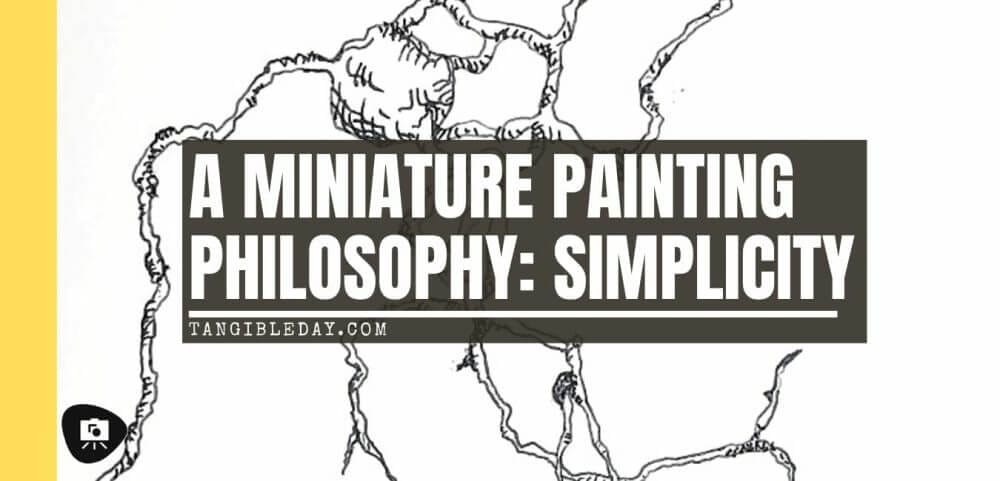Every miniature paint job is way to discover a bit about yourself. In art, the opposition to progress is your resistance to explore outside your comfort zone. This is true for athletes and erudites looking for the next metaphorical hill to climb. Of course, all this soul-searching and boundary pushing leads to a chaotic mess of things. At the end of the day, the tangible reward of completing a hard task is immeasurable. A job well-done is contentedness and peace of mind.
In this article, I briefly explore two findings in my miniature painting hobby. They may surprise you, or reveal our shared-experience in the endless hobby endeavor of making our models come to life.
Here are two helpful points I discovered from painting a lot of miniatures:
- Perseverance is the key to success. Painting miniatures is hard, but this is the reason you should do it.
- Simplification is a valuable, but resource intensive effort. It takes huge emotional and intellectual energy to simplify a complex project.
1. Painting Miniatures is Hard: Persevere
Painting miniatures is always daunting. It doesn’t matter if you’re a veteran or new: painting is hard.
I took some basic art classes in school, but the main progress has come through careful observation, experimentation, trial, and error. Much error. Of course, the reason I was able to complete the class was that I showed effort and endurance through failure.

For example, one project we worked on required painting a still life of household plants. Plants with their leaves, stems, and flowers aren’t the easiest thing to render on a 2D surface. We were also tasked to paint this scene using acrylic paints. As you can imagine, this left little room to mess around (acrylic paints dry really fast).
“I would not give a fig for the simplicity on this side of complexity, but I would give my life for the simplicity on the other side of complexity.”
–Oliver Wendell Holmes
But in this and many other hard experiences in art, I’ve found bits of treasured successes. I learned in the painting project of the leafy plants that I could not render every single detail. Instead, I had to look at the whole picture and try to capture that instead. Over time, as I struggled, I began to see the bigger structures.
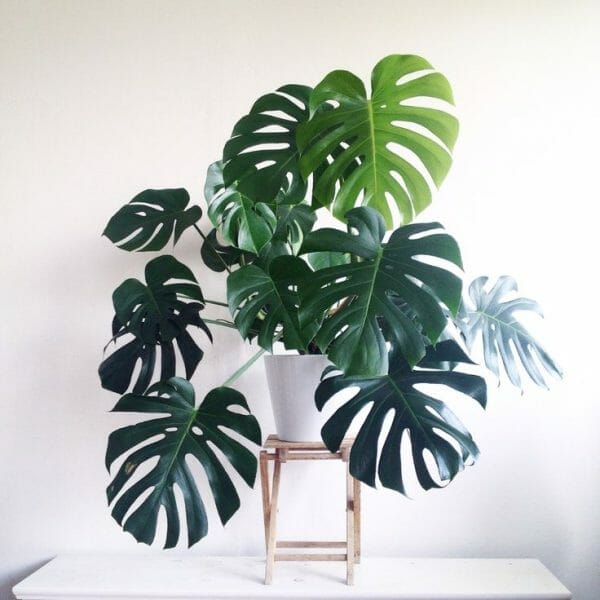
Some leaves overlapped with other bits and formed shapes like the wings of a bird. So, I painted the wings of a bird instead of leaves. The negative shapes created by the darker backdrop formed triangles and octagons. In this case, I painted the negative space instead of plant material. At the end of it all, when you stepped back from my painting, you saw a houseplant.
A Gritty Approach to Discovery
I learned through hardship that the more you look for details and complex features in an object, the harder it is for you to render said object.
However, to get to this point, I had to struggle through the project and finish the entire painting to see what I was really doing. The final picture did not truly emerge until the last brushstroke.
The same could be said of painting miniatures: “Every miniature looks like crap before you’re completely done”. I’m paraphrasing this statement from an award-winning artist.
There are only a handful of miniatures that I have painted that have come within striking distance of the 80% satisfied mark. My “vision” for any paint job has never truly been met. I’ve never painted my masterpiece.
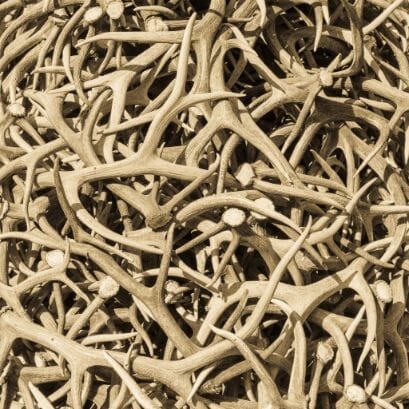
Yet, I keep going, struggling through each painting session, even with the knowledge that I’ll never reach perfection. I think the enjoyment and motivation for painting comes from the simplicity of trying to earn some measure of satisfaction from the simplest of actions.
And, this brings me to my next point.
2. Simplifying a Complex Project is Worth Every Drop of Blood
My inexperience led to the majority of difficulty in every miniature painting project. When I look at a large and complex model to paint, it appears daunting because my eyes and mind haven’t adjusted to how the workflow should proceed.
There’s something odd about our brains that makes things appear more difficult, complex, and challenging than reality may reveal. The only way to get through this “rut” is to proceed and struggle to find what simple path.
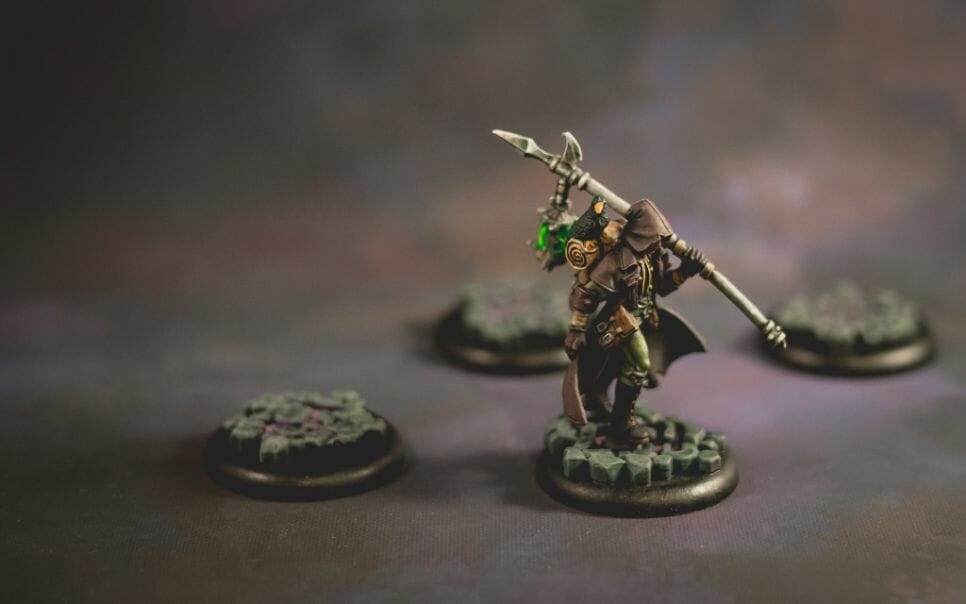
I kind of think of this like trailblazing a forest path. The first hiker to talk through an unknown forest will have to fight hard to make forward progress.
A Foreign Idea
When I was in the tropical dry forests of Nicaragua (for a pseudo-National Geographic adventure I went on for college), I recall being in the front of our team. I had a two-foot long machete blade that I needed to use to chop a path through foliage and dense undergrowth. The stupid blade was cheap, dull, and heavy. The muscles in my shoulders and arms burned after a few hard swings with this blade, and only a few feet of forward progress.

During this adventure I fondly remember, switching the machete from hand to hand to give myself a break. And, of course, the rest of my team continued to egg me on to keep going. I do recall looking back and seeing the trail I helped blaze. With my machete, and the multiple stamping feet of my hiking team behind me, we had cleared a dark open path through what first seemingly appeared to be impenetrable forest.
Through this complex mess, we had made a simple path forward. Anyone who wanted to follow us would merely walk along our path as though they were taking an afternoon stroll on a city sidewalk (but in a dark, wild South American forest).

Looking back, I can admit that every miniature I’ve painted contains a mistake or deviation away from the standard I had set. Every model has been a source of frustration and disappointment. I’ve never been 100% satisfied with any paint job. Complex as whatever project it is, I’ve never fully reached the simple path that leads to perfection.
Struggle Less: Do More
I know with an absolute certainty that I’ve created the pathway in my head to make the next job easier. Because I know how hard and complex a particular miniature is, but can be simplified through work, keeps my motivation high despite new challenges.

I suppose it’s like me trailblazing avenues in my mind about how to overcome those seemingly impenetrable obstacles.
When I see in my head a vision of what I want to paint that is so incredibly detailed and complex, I try to slow down and reduce the image into simple parts or layers. I break the complex task ahead into small, bite sized pieces. Ultimately, I am able to proceed with a work flow containing simple-steps after simple-steps.
Two Ways Repetition Improves “Everything”
Here are two examples of what I learned through repetition in miniature painting:
- I can produce a glaze that will shift all the colors into the correct tonal value.
- I can make a single brush stroke covers the exact amount of surface I need.

Of course, there are tools in my painting repertoire that I’ve had to learn and embed in my muscle memory. It’s kind of like knowing how to write a grammatically correct sentence. Before you can write a bestselling novel, you need to know how to put verbs and nouns together. You need to know how to spell. In the same way, my painting toolbox needs to be full of good tools, i.e., thin paints properly, etc.
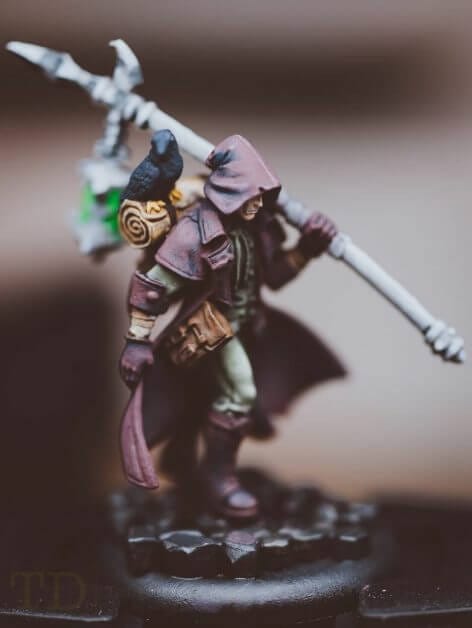
It’s the simple actions, many of them, adding up over lots of time that seem to be the part I like most about painting. The end result is many simple steps orchestrated into a singular product. In my eyes, a fully painted miniature will never be perfect, and I accept the finished model as just a tangible reminder of the simple things.
Final Thoughts
Painting miniatures is only one of many hobbies I’ve had over the years. But, miniature painting is the hobby that combines almost all of my other artistic skills into a single activity. Over time, I’ve learned a few principles that keep my enjoyment high even when a project bogs down into tedious, mundane, repetitive tasks.
It is within the repetition and boredom that you learn the most about yourself. This form of discovery is a subtle thrill; kind of like bicycling up an unknown, steep hill only to see your home in the distance (and dinner is on the table), and the ride back is all downhill. All your hard work has led to an effortless and lasting reward.
Fight through hardship to find the simple pleasure of a job well-done.



Tangible Day on YouTube (Miniatures and More!)

